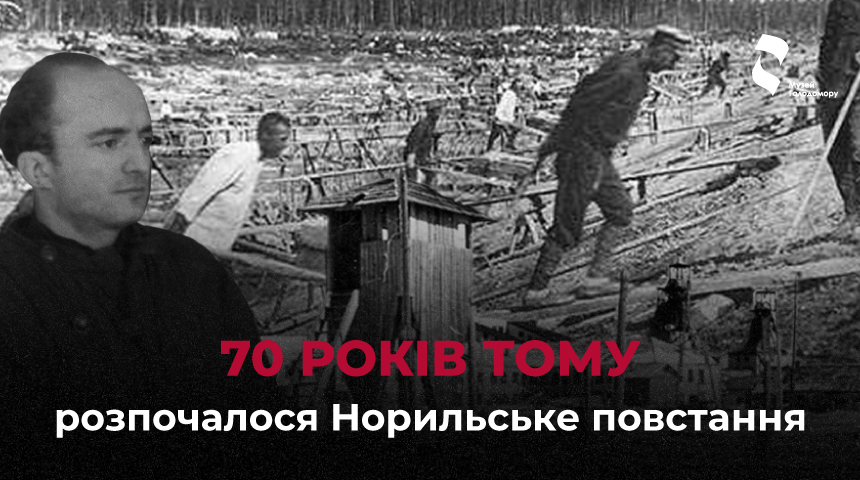70 years ago, the Norilsk Uprising began
On May 26, 1953, the Norilsk Uprising began – the largest uprising of prisoners in Soviet concentration camps.
More than 16,000 prisoners – both men and women – took part in it. They refused to tolerate the inhumane conditions they had to live in and work.
“There was an extremely harsh regime, hard work and unbearable living conditions… We lived in tents. At night, the hair froze to the tarpaulin. We were wearing uniforms left from the front. There were holes from bullets, shrapnel, and dried blood on the military clothes.
We were bitten by lice. There was not enough water. We got it from the snow. We received food twice a day. They used rye flour to cook liquid balanda, adding rotten sprat. We received a small amount of bread, and even then with some impurities. It was scary to look at us.
The work was hard labour. We worked in quarries for 12 hours a day. Women were given the same rate of production as men. It was allowed to write home only two letters a year. No one was interested in our health. Instead, there was neglect and accidents at every step. People went crazy,” Oksana Yurchuk recalled, a political prisoner from the Rivne region, who was sentenced to 15 years because her brother was in the UPA.
The last straw was the case when the escort fired an automatic round at a group of men who were being taken from one area of the camp to another. Among the convicts were killed and wounded. After that, a group of prisoners from the 4th zone refused to return to the barracks after work. Later, they were supported by the prisoners of the 5th and 6th (female) zones. And at the beginning of June, manifestations of mass disobedience covered the entire giant camp.
The driving force behind the uprising was the Ukrainians, who were the most numerous in the camp. The participants of the protest, in particular, demanded: shortening the 12-hour working day, improving living conditions, changing the brutal camp system of oppressing the individual and free will, and reviewing the cases of political prisoners regarding the legality of charges and sentences.
In order to suppress the resistance, the authorities gathered significant military forces and means. According to the information of the Ukrainian Institute of National Memory, on July 1, the uprising in the 5th zone was stopped by shootings, later in the 4th and 1st, on July 7, the women of the 6th zone – were calmed down with water from three fire engines and troops. The 3rd convict men’s zone lasted the longest. The uprising was stopped there on August 4, 1953, when 7 vehicles with armed soldiers arrived. About two hundred prisoners died in bloody clashes.
Despite the suppression of the uprising, the victory won. The prisoners’ political demands were partially fulfilled. The Norilsk uprising, which lasted 61 days, broke the backbone of the entire inhuman camp system of the USSR and became a symbol of the victory of the spirit over the Soviet repressive machine. After all, following this example, new uprisings took place: Vorkuta (July-August 1953) and Kengir (May-June 1954) in Kazakhstan. They finally forced the Soviet authorities to reform the Gulag, which was liquidated in 1960.
